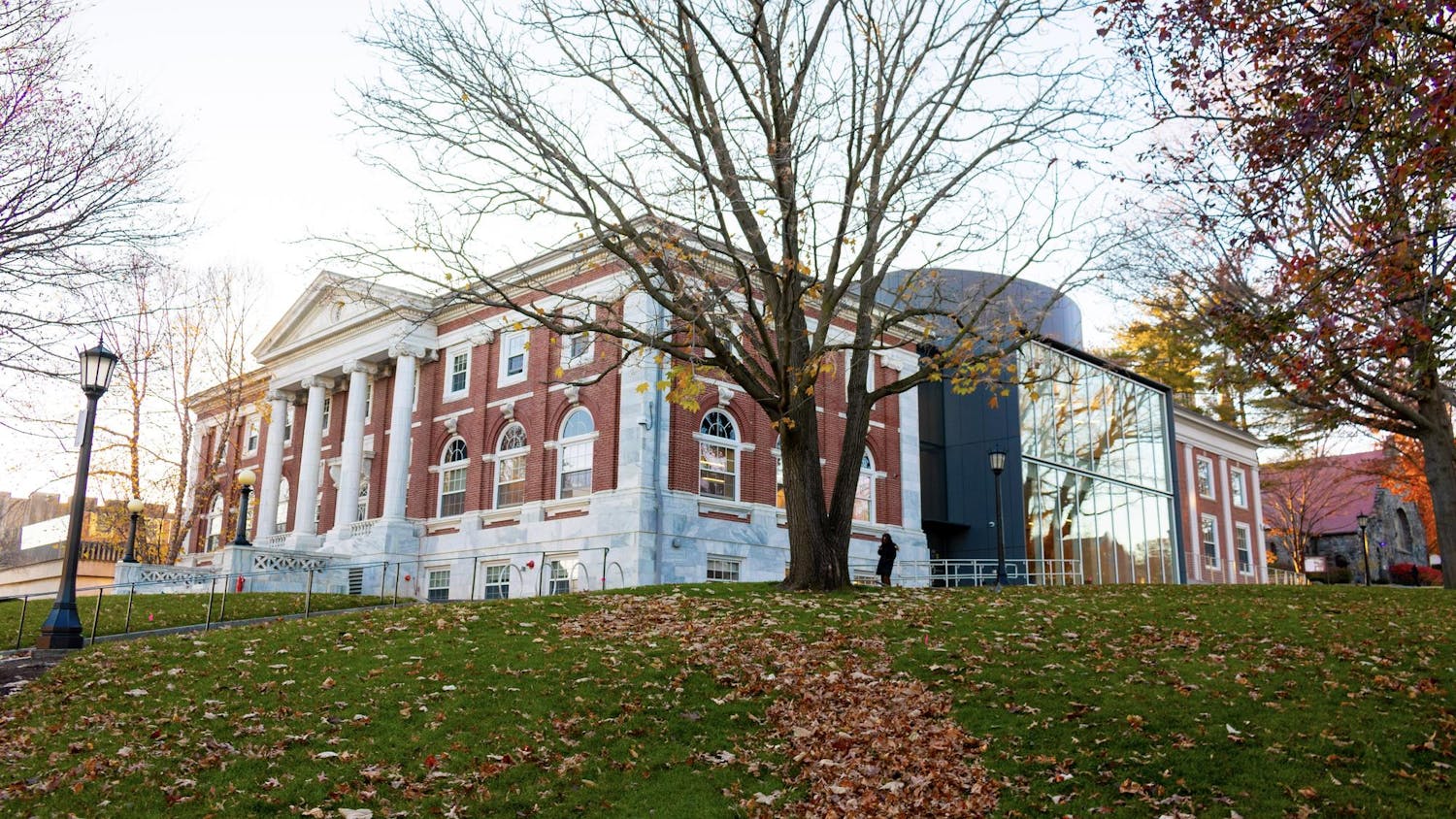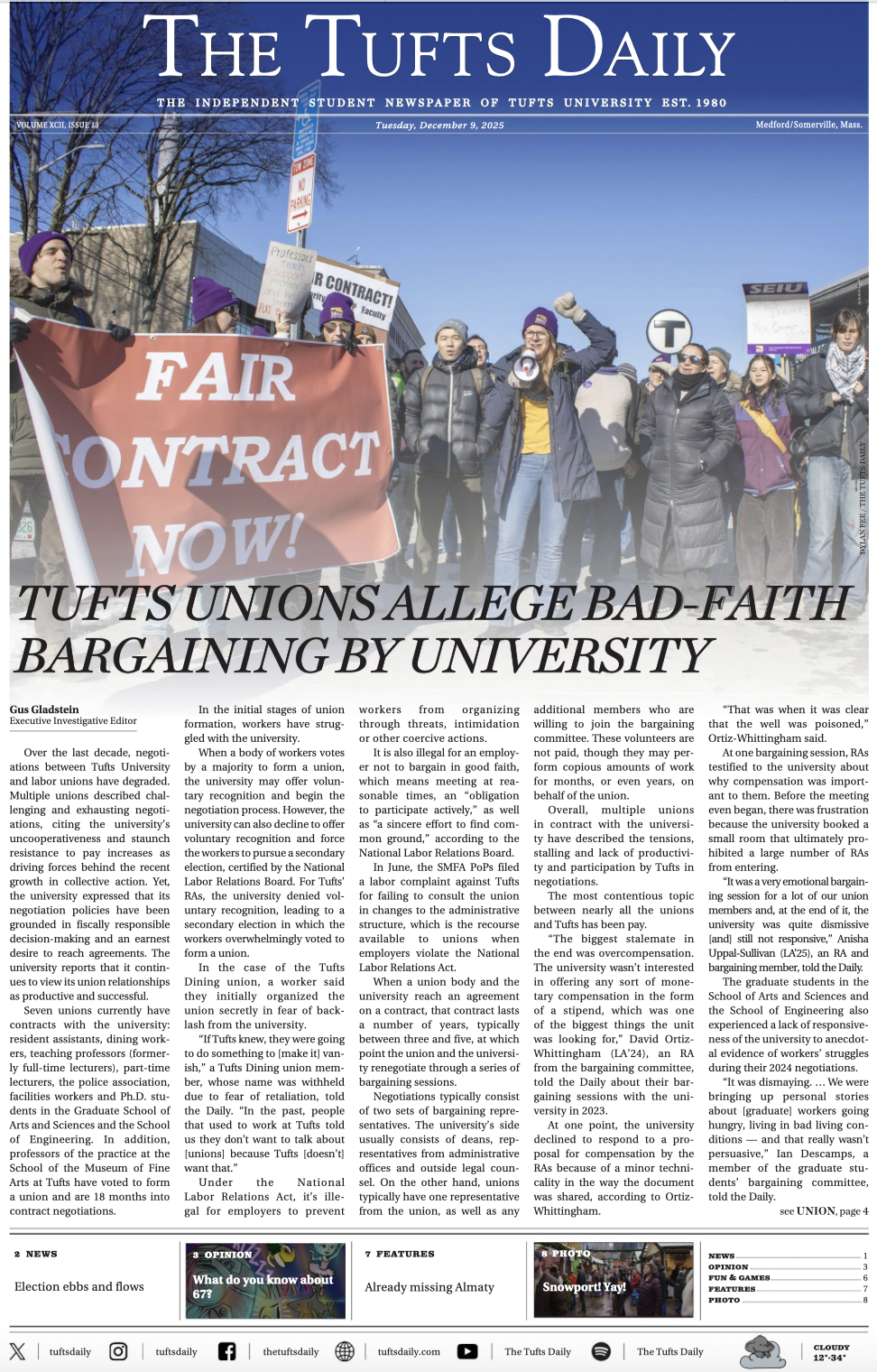On Monday, The Tufts Daily led with an article detailing an incident in which a student allegedly assaulted members of the Korean Student Association (KSA) with racial slurs and, eventually, physical violence. The name of the student was withheld, and he was referred to throughout as simply "the freshman." His identity, at least for now and for most, remains a secret. Before I explore the Daily's choice to grant him this anonymity, I want to pose a question: Why do such bias incidents seem to capture the campus' imagination, spur action and inflame opinions?
As of the time of my writing this, there are 94 comments on the article on the Daily's Web site. I think this deluge occurs because bias incidents speak to students' beliefs about the character of the Tufts community, about the contours that delimit it and the fractures that run through it. Often these bias incidents puncture students' assumptions about what type of mutually supportive community they live in.
In the aftermath of someone hurling racial invectives or a publication printing something similarly offensive, students seem to scramble for justifications and answers. Students seek an explanation and a name for whatever person, organization or pathology has led to an expression of prejudice that seems so unsettlingly at odds with their essential values. Clearly this is larger than just "the freshman," and can be abstracted and applied to the broader questions of community, inclusiveness and justice. How do campus publications sift through the anger and the hurt to mediate these issues?
Objectivity does not exist, and I have no doubt that some people at the Daily had the same visceral reaction to the incident when reporting and editing the incident as other students did while reading about it on page one. But the ethical constraints of journalism enjoin them to refrain from vilifying or passing judgment so they are able to present the most accurate and comprehensive picture possible. Beyond its editorial page, the Daily should neither prosecute nor defend "the freshman;" its job is to present the available evidence, give voice to the witnesses and let the student body act as a jury. Facts are presented and sources are quoted not tendentiously, but so that students can make up their own minds.
Editor-in-Chief Evans Clinchy spoke to this in a Letter from the Editor-in-Chief on Monday that discussed the Daily's assiduous attempts to convey "exactly what we believe happened." Note the use of the word "believe," because there is always an element of interpretation involved in reporting: The preconceptions of the reporter, the various (and sometimes contradictory) versions offered by sources and the omissions which limited page space necessitates all equivocate the final product. To the Daily's credit, they held off until they were "confident that we had the whole story."
As far as I can tell, the Daily strove to capture the whole story. Ben Gittleson quotes several different KSA members, allowing them to articulate both the chronology of the incident and their shocked reactions. And despite "the freshman's" seemingly despicable actions, he too is given a chance to defend himself. He receives ample room to present his perspective, although the fact that he communicated on the record with the Daily through a written statement suggests that he wanted to carefully control his response, rather than submit to a reporter's direct questioning. This detracts from his credibility, though I doubt many people buy his story; after all, it is his word against that of a group of people who were, unlike him, sober at the time.
Many of the comments on the Daily's Web site fault the Daily for juxtaposing "the freshman's" version with that of Korean students. These critics accuse the Daily of lending validity to an explanation — "the freshman's" — that in their eyes is totally apocryphal. I understand that people are looking for vindication and probably a redress of grievances, but the Daily's business is not to condemn "the freshman," no matter how evident his guilt may be to some. Journalists must remain disinterested — despite being members of the community on which they report — for otherwise they risk capitulating their status as reliable purveyors of information.
As to extending anonymity to "the freshman," Gittleson explained to me that after carefully discussing the situation, the managing board decided to keep "the freshman" anonymous largely because the administration has yet to take any action against him. Printing "the freshman's" name would prematurely establish his guilt and potentially expose him to the opprobrium of Tufts' "small and insular" community, Gittleson told me.
If "the freshman" were a public figure — an administrator or an elected official like a Tufts Community Union senator — the standard would be different. By putting themselves in a position where they are fixed in the campus' consciousness, such people agree to higher standards of accountability. Their actions merit more intense scrutiny and their names are a matter of public record. Those are the terms of the contract they have entered into with a student body that they are committed to serving.
But "the freshman" is not a public figure, so the Daily must uphold his right to privacy and to a fair and thorough analysis of whether the allegations against him are true or false. If and when his identity becomes public knowledge, his reputation will probably be irredeemably damaged. Most people who read the article in the Daily think he is clearly deserving of such stigmatization. But this is for the readers to conclude. The Daily cannot risk printing inaccurate or false information, no matter how troubling the event is for writers on a personal level.
--
Jeremy White is a senior majoring in English. He is the university's public editor. His columns are available online at http://ase.tufts.edu/publiceditor and he can be reached at jeremybw1@gmail.com.





